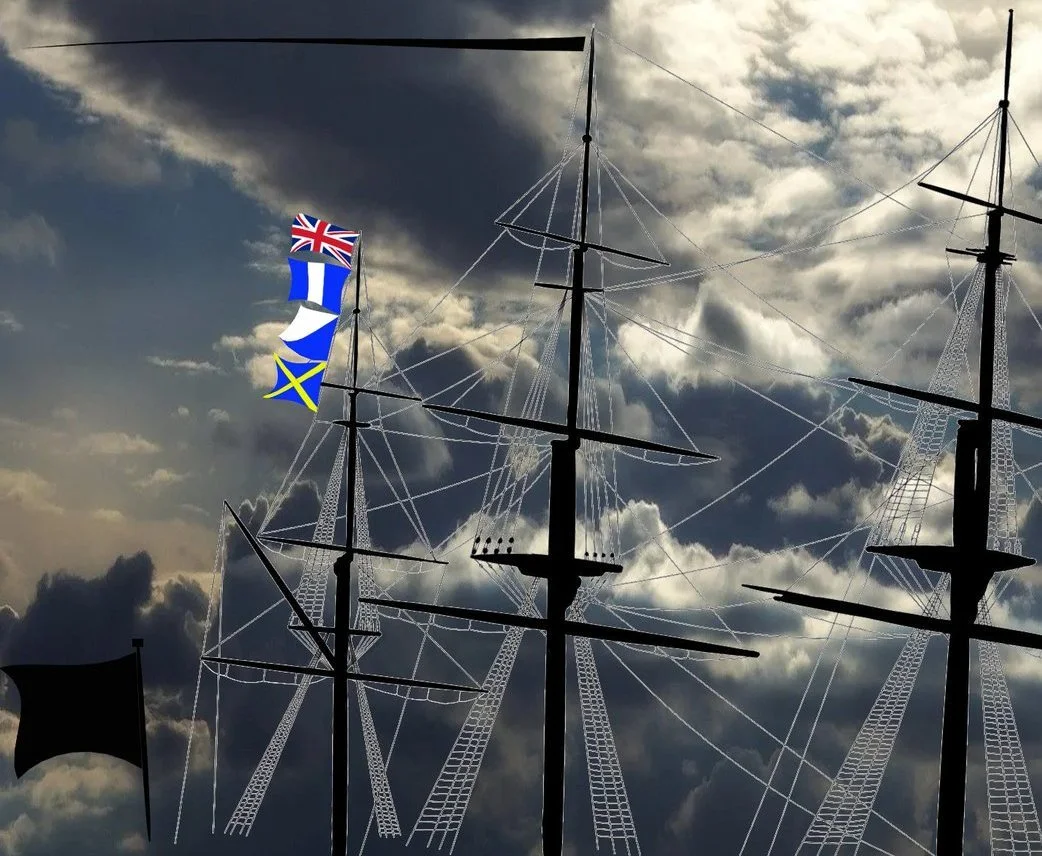A Brief Guide to 1803 Georgian Royal Navy Flags & Signals. Part 1
This is my guide to document my own research into the period, I was going to send it out in once article but feels this might get a little overwhelming and less detailed on certain topic that I feel could be a post on it's own.
I invite you join me on this journey into the Georgian Royal Navy through it's flags and signals.
Command/Distinguish Flags "Flag Rank," as it was commonly referred to, was the goal of any officer once they achieved "Post" rank.
Commodore
The first step on that promotion path was being made a Commodore. This was a temporary posting, but it allowed the Captain, now Commodore, to hoist his flag; a swallow-tailed broad pennant was flown from the main masthead. This flag replaced the Captain's commission pennant at the mainmast head. Depending on the squadron's colours, it could be found in blue, white or red.
Rear Admiral
This was the first of the 'permanent' appointments to a flag rank, authorised to fly a command flag from the mizzen masthead of the flagship. Depending on the squadron's colours, it could be found in blue, white or red and flown along with the ship's pennant.
Vice Admiral
These command flags were flown from the foremast masthead. Depending on the squadron's colours, it could be found in blue, white or red and flown along with the ship's pennant.
Admiral
Full blue or white Admirals would fly the corresponding command flag from the main masthead. There wasn't an Admiral of the Red until it was established in 1805; before this, Senior Admirals would fly the Union flag similarly.
Ships Pennant Numbers
As in common with the modern day fleet, warships of any rate were assigned their unique number, usually found within a signal officer's signal book. I'm sure any avid naval fiction fan has heard "Make our number" or something similar during their reading; this refers to hoisting their pennant number to another ship for Identification against the navy list. (Normally after exchanging the private signal of the day)
We'll use Victory as the example of the hoist that would be formed of the following flags,The Navy List contains the list of all vessel currently in the fleet along with their official number guns.
The signal hoist considers of a prefixed by a union flag followed by the pennant numbers required.
Page 14 | Signal book ref HOL 53 National Maritime Museum showing the the Navy List.
Pennant Number hoist for Victory 703
This example is seen within the pages of a period signal book (ref HOL53) held by the National Maritime Museum in Greenwich. See a vessel making it’s number 497 and checking the navy list that make her HMS Perdrix (24)
Pennant boards
Once a vessel joined a new squadron or fleet it would be given they would given a distinguishing pennants by the Flag Officer to allow for a signal to be addressed directly to a ship rather than a general fleet wide signal. Also allowed but quicker signals as they didn’t need to use the full pennant number hoist.
Some more research will be going into this to see how it worked in practices.
I have used as references to my research and knowledge. Titles such as "Flags at Sea" by Timothy Wilson (1986) and "British Flags" by William Perrin (1922).
I highly recommend these to anyone interested in this topic, as they convey the history better than I can ever do.
Consider supporting my research -
buymeacoffee.com/Dockyardtalk/why-naval-signals
Bibliography:
Perrin, William. British Flags. London: H.M. Stationery Office, 1922.
Wilson, Timothy. Flags at Sea. London: Croom Helm, 1986.







